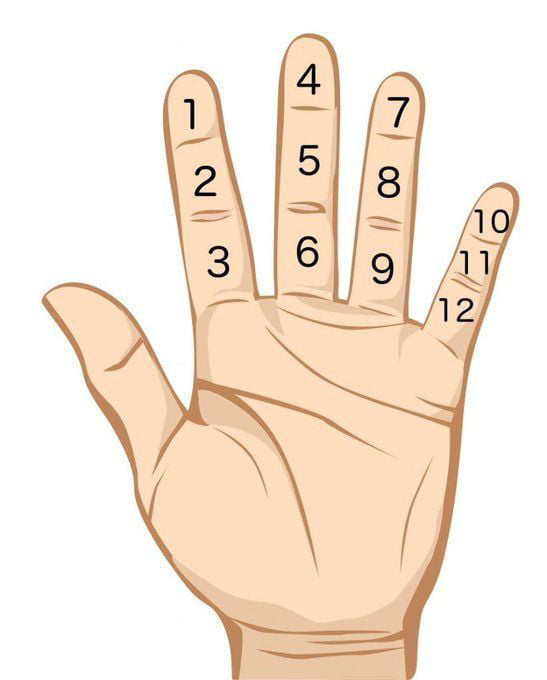If the day started at 1:00 then by the second hour you would be at 2:00, even though only 1 hour has passed. Effectively the day starts at 0. In fact in 24-hour time that is how it’s depicted, 00:00 with midday being depicted as 12:00, so it isn’t confusing
Careful, there are Americans around
Americans love units based on 12
As a programmer I’d rather it start at 0
Yeah but now you can’t enjoy the delights of python
In the roman empire the day/night cycle was divided into 24 segments. 12 for the day and 12 for the night which also meant a day hour in summer was longer than the night hour.
If the day started at 1:00 then by the second hour you would be at 2:00, even though only 1 hour has passed.
When the second day of the month starts, the day of the month is 2, even though only 1 day has passed.
I mean, numerically it does make sense to start at zero but it doesn’t seem to correspond to the way people think and talk.
Feel free to take it up with the Romans. It’s their stupid calendar system.
I also take issue with there being 7 days in a week rather than 10, it’s just messy.
Which is also why I hate that our calendar starts at year 1.
It’s the same logic that was used by ancient astronomers to arrive at 360 degrees for a full revolution.
The math is easier if you have to do it by hand.
These are called “superior highly composite numbers” apparently https://en.wikipedia.org/wiki/Superior_highly_composite_number
It’s also the one advantage Imperial has over metric. It’s easier to do mental math in a lot of cases in base 12 rather than base 10.
Now excuse me while I bar my windows and doors from the mobs of angry people that show every time I point this out.
Only really counts for feet and inches. But yes, having your base unit be divisible by halves, thirds, quarters, sixths, and twelths with whole numbers of sub units is highly useful when fabricating objects when you don’t have access to modern tooling and supplies. In fact I would argue base 12 is the superior numerical system that was abandoned for metric and we have lost something in the meantime. Though Jan Misali might disagree with his love for sexinal.
Imperial units do have another advantage to this day, though. When talking about machining bolts and threads Imperial use threads per inch or threads per unit length while metric uses the pitch of the thread, so mm in-between threads. This decision means that when machining imperial nuts and bolts we by default pick whole numbers of threads per inch which due to the circular nature of lathes means that a simple clock dial can keep the lead screw synchronised with the head. Since metric uses pitch we pick numbers like 1.25mm pitch which does not always synchronous well with the lead screw and head and requires some odd gear ratios to cut specific threads.
True, but why does volume/length/weight have to be separated? I honestly wouldn’t mind a base 12 system if they were connected logically.
I should have been more precise, I was really just talking about length measurements and less so on the holy fuckshit of everything else. I, too, would be super on board with a base 12 measurement system…
If we invent it we can have 3 competing standards!
Let me jump in until the mobs show up. “Noooooo, it’s just what you’re used to lalala. When is dividing by thirds ever useful, anyway?”.
I’ve also found that if you make this point without any reference to metric vs imperial, people tend to accept it.
That’s a good tip. I’ll keep that in mind next time this topic comes up.
Poor 70. Imagine being the objectively “weird” one out of a hundred.
You’ve gone 360 on me.

“At least we’re not mixing in letters”

I see
IIIIin there and I cry a little on the inside.This has become a standard on analog clocks and watches (presumably to avoid confusion with VI), but for some reason IX and XI (for 9 and 11 respectively) is fine.
Personally I’d like to see IX and IIIIIIIIIII.
ETA: I guess IX and XI are ‘fine’ because they’re not upside down, but my point still stands.

Hour hand -> hour = n
Minute hand -> minute = n * 5
It makes sense, there’s just an algorithm attached to each pointer.Hour -> 3 = 3
Minute -> 3 = 3 * 5 = 15The first clocks didn’t have a minute hand though.
Well it’s because noon means nine because the day starts at six o’ clock, so three is noon, but we use it to mean twelve which is closer to midday, obviously
At least we’re not mixing in letters
Zulu Time: Am I a joke to you?
Also see this: https://gist.github.com/timvisee/fcda9bbdff88d45cc9061606b4b923ca
It amazingly explains all the insanities for handling dates and times.
For some reason I heard this in a combination of the voices of Mitch Hedberg, and Nate Bargatze as George Washington.
6 means 30 is some toilet paper math
At least our hours are the same length regardless of latitude now, so let’s be grateful for that.
oh god, thanks for making me imagine something terrible

IIRC they counted the bones in their fingers using their thumb and that gives 12. The first sundial was around the equator and there is always light for half a day, so half a day becomes 12 hours.
To count large numbers often one hand was used to count using 5 fingers and the other to count the bones, so you get 5x12 for 60 minutes.
AIUI there was an aspect in the divisibility of the numbers being convenient.
12 is divisible by 2, 3, 4, and 6. 60 is divisible by 2, 3, 4, 5, 6, 10, 12, 15, 20, and 30.
10 is divisible by 2 and 5. 100 is divisible by 2, 4, 5, 10, 20, 25, and 50.
If you want to minimize dealing with fractions, 12 and 60 are far more convenient than 10 and 100.
That’s an interesting thought, but I believe it to simply be a coincidence.
The base 12 counting being based on counting the division of your fingers is historically verified, but if the division aspect was so compelling to them you’d expect it to carry forward into their writing system.
By the time you get cuneiform math though, they actually go back to base 10.
https://images.app.goo.gl/9GR6VEiT7GHYF3KaA
As you can see base 12 is not in the written system, or for written mathematics. It just was convenient for counting on their hands.
They used mixes of base 10/base 12 and base 60.
Base 10 would be used go determine the symbols for a specific “digit” in base 60.
So similar to how our 13 is 1 ten and 3 ones, their 13 was the symbol for 10 then 3 symbols for 1. 13 = 𒌋𒁹𒁹𒁹 But 73 would be written 𒁹 𒌋𒁹𒁹𒁹
Which would be interpreted as 1 sixty and 13 ones, or 60 + 13
I’ma start a revolution where we use duodecimal metric for everything, including time.
That’s how we ended up with 12 months of varying length in a year and it’s a mess.
It’s a problem no matter how you divide the year
That’s why I propose changing the orbit of the earth, too
13 months of 4 weeks + new year’s day (+leap day) actually fits perfectly.
I wouldn’t call having an unassigned remainder “perfectly”. And always, leap day fucking shit up lol
Not if you divide by 5. It gets you 73 days each.
Ok, but now subdivide the 73 day month-analogs into week-analogs.
I can see calling the month analogs “seasons”, but 73 is a prime number so you’re boned. We need subdivisions smaller than that for practical purposes
The french:

Goddamn metric time
Even the French figured out that decimalized time was stupid after a couple of years.
Which has added credence to the old saying that “The French follow no one. And no one follows the French.”
Why is it stupid beyond, “nobody else uses it”?
Well, beyond the sheer social resistance to the idea. Turns out everyone needs to agree it’s a great idea and almost no one did. Evidently humans are wired to the base12 time format far better.
The attempt at switching to base10 time quickly fell apart when people started notice that the the “time markers” were starting to drift. And at some point they finally figured out that what we call “noon” was going drift rather quickly to not happening until evening and therefore Monday was going to move to a different spot also. This is a very bad thing. Because any kind of calendaring system needs to be as consistent as possible. Noon must happen at the same point in the day every day or as close to it as it it can mathematically get. If it drifts to fast and far, then it’s a worthless marker for time. And decimal time has that problem in spades.
Now, no calendar system is perfect because the orbits of the planets in our solar system isn’t perfectly consistent. Sometimes the orbit of earth is a tiny bit faster or sometimes it’s a tiny bit slower. So we strive to get a close as we can but we still need to make adjustments. Turns out, all that math is really bloody hard.
??? That’s not how it worked at all.
They still had the same length of time per day; 24 hours was equal to 10 french hour, each french hour was 100 french minutes, and each french minute was 100 french seconds. So noon arrived at 5 every day.
I kinda want to try it out lol
Why the ‘IIII’ insted of ‘IV’?
Prevents confusion between the four and the six: III, IV, V, VI, when the watch is not held perfectly vertically for viewing.
Actually very common in watches with roman numbers iirc
i’m pretty sure that IV is a modern typographic thing
I’ve also heard that, because in Latin IV is the beginning of “IVPPITER” (Jupiter), there’s a theory that people avoided using “IV” as to not “disrespect” the god’s name. 🤷♀️
Also, on a 12 hour clock, 3 sets of four looks clean af I guess, e.g.:
- I, II, III, IIII
- V, VI, VII, VIII
- IX, X, XI, XII
Since the IIII usage is common in the Middle Ages and even into the Early Modern Period, when nobody believed in Jupiter, that is obviously just something somebody made up.
It could have also started from that and continued on despite people not knowing the reason, no? I do agree that it’s quite silly and unlikely, though.
May as well just go with VIIII then. Or maybe 9.
IIIIIIIII
Why does everything that comes from Switzerland always seem to be owned by Swatch? Do they not have any other brands there?
Swatch is the largest watch company in the world and you’ll be surprised which brands are owned by them. Omega for example
Now I really want a .beats watch. That’s so retro cool.
If you’re ok with a screwdriver, you can mod a Casio F91-W and add a .beat watchface https://www.sensorwatch.net/docs/watchfaces/clock/#beat-time
I only recently learned the etymology of the word: “second”
Its name comes from being the “second” division of the hour, with the minute being the first.
I’ll see you in 5 firsts, 2 seconds and 7 thirds.
Zero zeros?
I honestly hate this.
It’s like bad world building for some throwaway fiction story.
It’s funny how we go straight to metric when dividing seconds
Days start at 0h, not 12h
It can’t start at 12 hours if there are 24 segments.
And keep your letters out of it too.
Days start at 0h, not 12h
Show me where is the zero here?


I have a clock that has 0 at the bottom, 6 in the 9 position, 12 at the top, and 18 in the 3 position.
I present to you… the binary clock

That’s fantastic and I want one, but it’s a BCD clock. Binary would say 01100 001111 101101
The AM/PM bullshit:
AM: 12, 1, 2, 3, 4, 5, 6, 7, 8, 9, 10, 11
Then the same for PM. Who counts like that? Whats after 12? 1! What?
The galaxy-brained group known as “Z12 + 1”. “What if we did modular arithmetic but one-indexed.”
Edit: Actually, wait, it’s worse: zero-indexing but we represent the zero element in Zn as ‘n’. Kill it with fire.
Is not 12+12Z the exact same coset as 0+12Z? Is 12 not the identity element? Must group theory follow computer science conventions?
People who lived before the invention of zero counted like that!
I have no idea if that’s true but I believe it
The idea of zero being a number rather than the absence of a number took a very long time to settle on. There’s a whole history book on the topic!
I listened to an audiobook about the history of zero years ago (can’t remember the name, might be that one). I thought it would be dull enough to fall asleep to.
It was not.
Big brain ape like count in many systems
What clocks do you have that say 0, except for the 0 in 10?
Digital ones.
… what digital clock goes clockwise?
Well I can tell you that mine definitely doesn’t go anti-clockwise
Mine just goes south
European ones
Fair enough
Don’t listen to OP’s bullshit.
They work for big clock. They’re trying to convince you 12 hour clock is useless so they can sell you double the clock.
Wouldn’t you need half the clock if it had twice the numbers?
Look at this guy, only one clock. I keep two analog clocks in each room, the AM 12-11, and PM 12-11. The way it was meant to be.

















